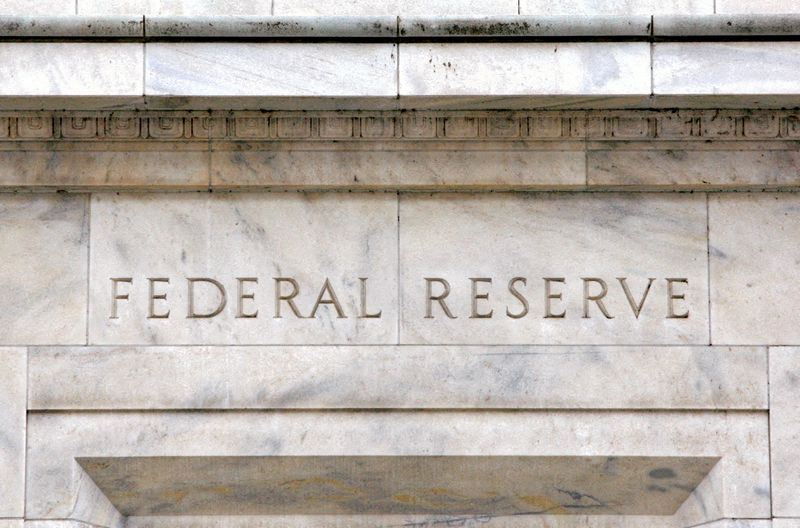By Howard Schneider
WASHINGTON (Reuters) - With the Federal Reserve steaming toward another interest rate hike this week, policymakers face a choice over how much weight to put on recent economic data that has made hoped-for outcomes on inflation and unemployment seem more likely while also posing a risk the economy is too strong to keep prices in line.
Since the U.S. central bank's policy meeting in June, inflation has slowed more than expected towards the Fed's 2% target, with many analysts arguing a cycle of moderating price hikes is underway and should continue without further rate increases beyond the quarter-percentage-point hike broadly expected to be announced on Wednesday.
But the sense of optimism in a Fed-orchestrated 'soft landing' - a scenario in which inflation falls, unemployment remains relatively low and a recession is avoided - has also buoyed financial markets in ways that could counter the central bank's aims, something policymakers are likely to guard against with a still-tough inflation-fighting message despite where the data have been pointing.
The Fed "does not want to be head-faked by the recent deceleration in inflation and declare victory too soon," Diane Swonk, chief economist at KPMG, wrote on Monday, concluding that the central bank will leave its options open for further increases in borrowing costs. "Financial markets have consistently front-run the Fed ... That has already eased credit conditions and could stoke an acceleration in growth."
The rate-setting Federal Open Market Committee is expected to lift its benchmark overnight interest rate to the 5.25%-5.50% range when it releases its latest policy statement at 2 p.m. EDT (1800 GMT) on Wednesday. Fed Chair Jerome Powell will hold a press conference shortly after to elaborate on the decision.
BALANCING RISKS
In the six weeks since their June 13-14 meeting, Fed policymakers have digested data offering a mirror image of what they faced a year ago. At that time, six months of contracting economic activity seemed to show a recession developing, prices were rising fast, and central bankers had accelerated rate hikes to a pace expected to make any downturn even worse.
Now the issue is how much blue sky to acknowledge. Last summer's Fed meetings, were conducted in an atmosphere of deep concern about a surge in inflation to four-decade highs and the economy's fate as the Fed tried to expunge it. Since then the unemployment rate has been little changed at 3.6%, growth has run consistently above trend, and still the Fed's preferred measure of inflation has fallen from 7% in June of 2022 to 3.8% as of this past May.
That's still nearly double the central bank's 2% target, and some officials worry it will prove increasingly difficult to cover the remaining ground if the economy remains as resilient as it currently appears.
Signs of a slowdown are there, to be sure, and some policymakers expect more weakness is coming - an argument for caution in considering further rate increases.
But with monthly job growth still above 200,000 as of June and wage increases outpacing inflation, households may be able to keep spending and foil the consumption slowdown some Fed officials feel is needed to wring out the rest of the excess inflation.
Indeed, the International Monetary Fund on Tuesday raised its outlook for U.S. economic growth this year, saying the resilient consumption evident in the first part of 2023 was "a reflection of a still-tight labor market that has supported gains in real income and a rebound in vehicle purchases."
NO 'SUDDEN STOP'
U.S. stock markets have been rising and other measures of financial conditions show some conditions loosening even as the Fed tries to restrict the economy. In fact, a new central bank financial conditions index shows peak tightness may have been hit late last year.
Over the course of the second quarter, an Atlanta Fed "nowcast" of economic growth for that three-month period has jumped from a 1.7% annualized rate to 2.4% on the basis of strengthened consumer spending, stronger business investment, and a larger contribution from government spending.
The change crossed a significant line, moving from just below the Fed's 1.8% estimate of trend growth - and a level that should thus continue to temper inflation - to significantly above it. The first estimate for second-quarter gross domestic product will be issued on Thursday, with economists anticipating a 1.8% rate of growth versus 2.0% in the first quarter.
Still, unless there's a sharp drop in activity soon, it could mean Fed officials have underestimated the economy's strength and may become doubtful about the prospect of a continued decline in inflation.
Fed officials in June projected GDP would grow just 1.0% in 2023, an outlook that "basically requires a sudden stop in the economy in the second half of the year," wrote Tim Duy, chief U.S. economist for SGH Macro Advisors. "We already have enough visibility on the third quarter to know that isn't happening."
That will likely keep the door open to more rate increases - for now. U.S. central bankers were caught out in 2021 when their initial analysis of rising inflation attributed it to forces, like a supply shock and pandemic-era spending, that they thought would pass with time. Even if that now appears to be happening two years later, they'll likely be slow to take the win.

"It's not clear yet how much growth the Fed will tolerate during a period of softer inflation numbers," Duy said, with the focus possibly shifting towards the evolution of the real economy alongside the data on prices.
"We think that Powell will lead market participants to broaden their focus beyond the inflation numbers by explaining that for the Fed to be confident it will restore price stability, it needs to see further cooling in demand evidenced by GDP growth slowing substantially, softer job growth, and further downward pressure on wage growth."